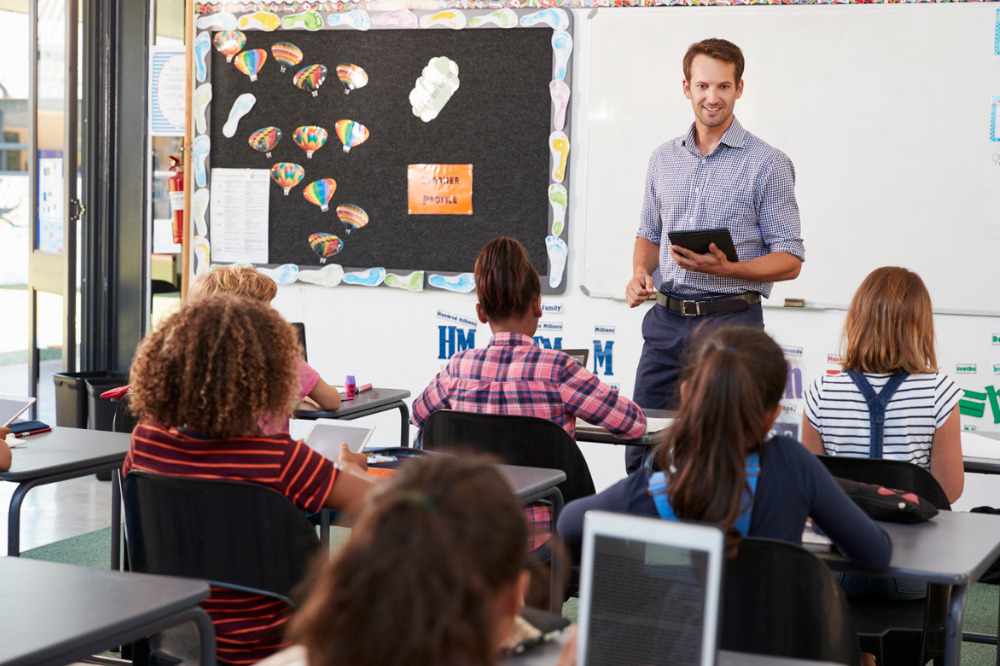
This article was produced in partnership with Vivi, the only wireless screen mirroring and digital signage tool designed for education.
Vivi is the only wireless screen mirroring and digital signage tool designed for education. The company helps IT help teachers help students with classroom technology that enhances collaboration, control, and creativity. Vivi currently supports more than 1,000 schools, 40,000 classrooms, and 250,000 students and teachers.
For teachers who are getting into the thick of Term 1, the huge year that was 2021 might already seem like a distant memory, but the many challenges it threw up for education are nonetheless still very visible in classrooms across Australia today.
According to recent reports, the greatest of these challenges for teachers remains burgeoning workloads exacerbated by inadequate resources and a lack of flexibility.
For this reason, many educators are increasingly on the lookout for ways to streamline and reduce their workloads so they can get back to their core job – teaching.
Vivi is one company making it easier for teachers to deliver their lessons by allowing them to wirelessly display written material, images or videos to students who can then annotate the content with their own notes using their own devices.
Schools can also use Vivi to communicate emergency broadcasts, digital signage, and student health and well-being checks.
Vivi currently supports more than 1,000 schools, 40,000 classrooms, and 250,000 students and teachers, and its creators have set a goal to reach one million classrooms.
Below, The Educator speaks to the executive team at Vivi to find out more about how the company is helping schools give student engagement, and performance, a shot in the arm in 2022.
TE: In what ways can Vivi be a value-add to Australian classrooms in 2022?
Vivi is the only wireless screen mirroring and digital signage tool designed for education. Think of it like an Apple TV on steroids, engineered specifically for the classroom. The product is centrally managed by IT administrators so that they can reduce internal helpdesk support tickets, works with absolutely every display/media/device so that it plugs into any learning environment, and once a teacher starts using Vivi, they won’t teach without it. One feature that teachers love related to empowering them to focus on their core job is that when you play video on the main classroom display/s, the Vivi box does the streaming, meaning there is no latency, it automatically removes any ads (imagine this when playing a YouTube video in a classroom!) and it frees you up to use your device for something else. Play a video that doesn’t buffer, without ads, while you respond to emails in privacy. Only with Vivi.
TE: Many schools continue to struggle with some elements of hybrid learning – namely keeping students engaged when they have to learn from home. Drawing from your work with schools, what are some of the ways teachers can improve student retention and engagement during this disruptive time?
Engaging students both physically and digitally at the same time is a near-impossible task, but some products are just better equipped to manage a hybrid learning environment than others. With Vivi, a Zoom-like experience is built directly into the app teachers and students are already using, so regardless of where the student is, they can see their teacher and whatever content is being shared on the main display/s in the classroom. They can screenshot and annotate the content, share their own screen (with teacher permission – they see a live preview first), and communicate directly with the teacher through instant messaging, but they can’t message their classmates. The focus should be on the content, not on individual conversations.
TE: While the term ‘right fit’ technology is unique to each school’s context, what do you feel are the most important digital resources for schools to be using in 2022, and why?
A school’s education technology stack is a custom experience, but a typical structure includes a student information system, a learning management system, presentation tools, learning applications, and electronic devices. Once you have the right pieces, building the edtech stack can like completing a jigsaw puzzle. Some helpful tips include seeking compatibility with existing technologies (what you choose should work with everything), you should seek products that are designed for education (consumer products don’t scale at an enterprise level, and business products lack the nuances of being in a learning environment).


